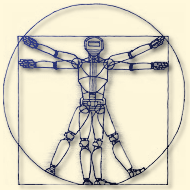Howard Berg
 Harvard University
Harvard University
"Motile Behavior of E. Coli, a Remarkable Robot"
Abstract: Bacteria are self-replicating machines about one micron in diameter. Some swim by rotating long, thin, helical filaments that arise at one or more points on the cell surface. Each filament is driven at its base by a rotary motor only 45 nm in diameter made from about 20 different kinds of parts. Control of the direction of rotation of such flagellar motors is the basis for the behavioral response, e.g., for the ability of cells to swim up spatial gradients of chemical attractants. The best-studied organism is Escherichia coli, which lives in our gut. I will tell you about some of the physics that E. coli knows, outline the signal transduction pathway that links its chemoreceptors to the flagella, and describe some of the experiments that have been done to probe its secrets.
Biography: Howard Berg is a physicist who does biology. He studied chemistry at Caltech and the Carlsberg laboratory in Copenhagen, preclinical science at the Harvard Medical School, and chemical physics at Harvard, where he received a Ph.D. for work with Norman Ramsey on the atomic hydrogen maser (1964). Following a stint as a Harvard Junior Fellow, he held academic positions at Harvard (1964-1970), the University of Colorado at Boulder (1970-1979), Caltech (1980-1986), and again at Harvard (1986-), where he is Herchel Smith Professor of Physics, Professor of Molecular and Cellular Biology, and member of the Rowland Institute. He has studied methods for separating macromolecules according to mass, the architecture of red cell membranes, and the motile behavior of bacteria. The latter work began with construction of a microscope that tracks bacteria in three dimensions, continued with arguments establishing that bacterial flagella rotate, and now focuses on the signal transduction pathway that links chemo-receptors to flagella and on the operation of the flagellar rotary motor. He is author of Random Walks in Biology (Princeton, 1993) and E. coli in Motion (Springer, 2004).

